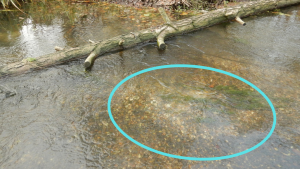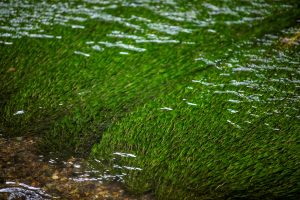Panshanger Park is 1,000 acres of countryside situated between Welwyn Garden City and Hertford. Herts and Middlesex Wildlife Trust is working with the park’s owners, Tarmac, to manage the park for both people and wildlife.
Wintertime can sometimes feel like a long stretch of radio silence on the wildlife side of things. Thankfully, in the last couple of weeks the daylight is getting noticeably longer, with birds starting to rehearse their Springtime songs and investigate potential nesting sites, and snow drops peeking through the leaf litter.
Even though it has been quiet for the past few months for much of the wildlife at Panshanger, it has been busy for some of the aquatic life found here. Winter is a time for spawning fish in the river, with the native brown trout preparing the gravel to their liking to lay their eggs in. They do this by fanning their tails to create small hollows in the gravel. These prepared sections are called redds, which the fish use as nests for their eggs on the riverbed. The conditions need to be just right for them to successfully hatch. A riverbed of small loose gravel between 10-40mm, no silt and a good flow of oxygen rich water are all factors that improve their chances of success.
 Gravel trout redds – circled in blue – on the River Mimram. ©Rob Mungovan
Gravel trout redds – circled in blue – on the River Mimram. ©Rob Mungovan
Over the past couple of years, really positive habitat improvement works have been going on along sections of the River Mimram, spearheaded by the Wild Trout Trust. This has been to improve the rivers to create good spawning conditions for the trout, which also benefits the other wildlife in and around the river.
The naturalistic felling of trees, hinging into the water either across the river between the banks, or pinned alongside one bank, can help to diversify the flow. The more constricted sections increase the flow rate, scouring the bed, removing the silt and creating good sites for the trout redds, whilst the slower flow sections are good areas for young fish nurseries. Other key fish species in the river, such as grayling, also benefit from these variations in flow rate.
 Gravel trout redds – circled in blue – on the River Mimram. ©Rob Mungovan
Gravel trout redds – circled in blue – on the River Mimram. ©Rob Mungovan
The slower flow can also encourage aquatic vegetation, such as sedge, to grow which provides food and shelter for water voles. The hinged trees on the bank sides have proven to be good stop off points for passing otters. Their spraint or remnants of their dinner (quite often crayfish remains) are evidence of this.
If you would like to learn more about the nature, history and geology of Panshanger Park, take a look at our upcoming events at panshangerpark.co.uk.

Jo Whitaker is the Panshanger Park people and wildlife officer. She works for Herts and Middlesex Wildlife Trust and her role is funded by Tarmac.


